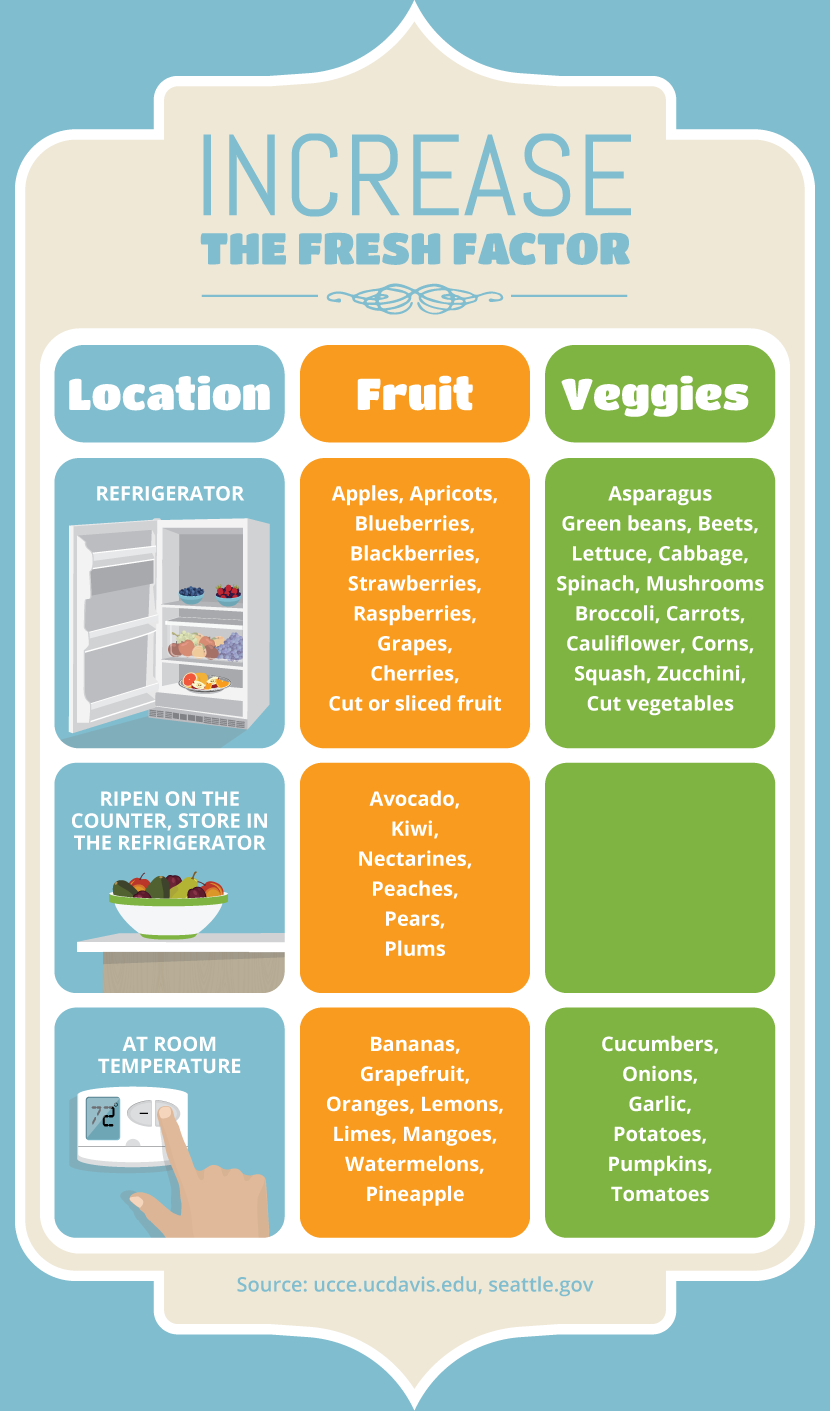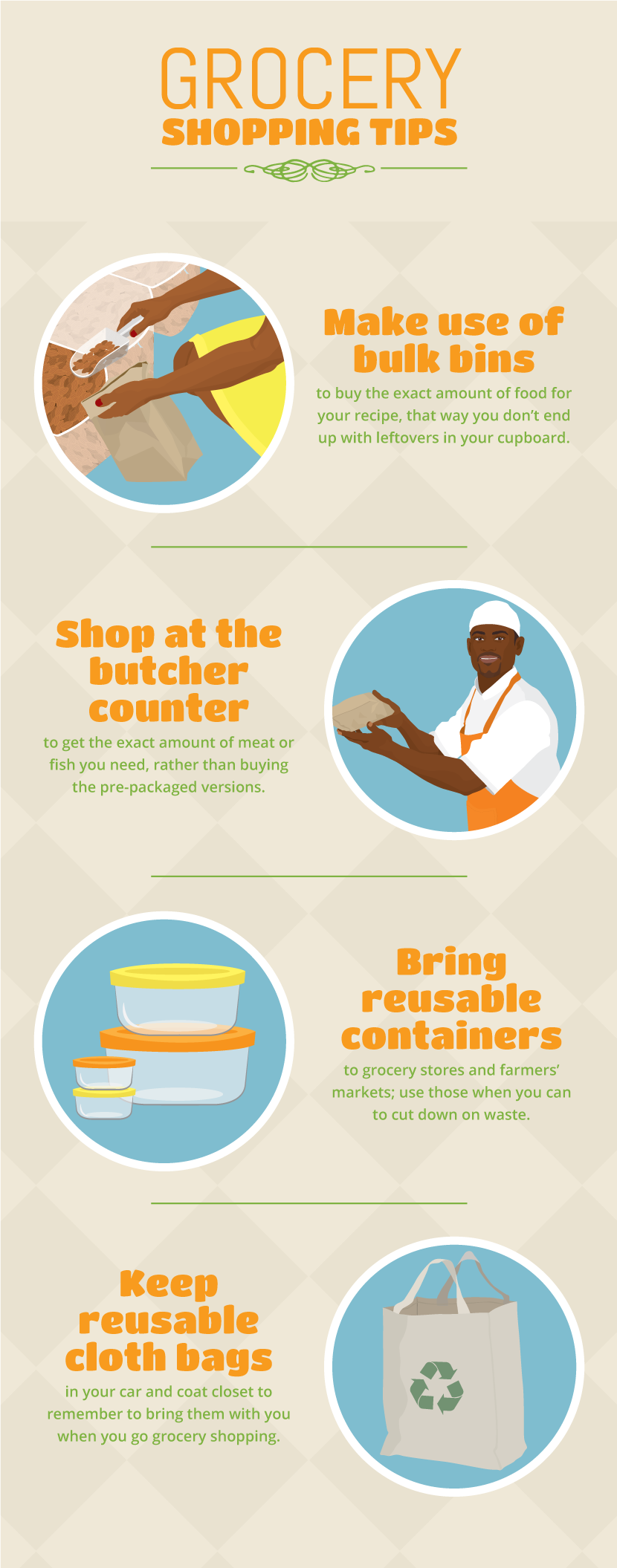Tackling Food Waste Starts in Your Kitchen
Up to 40 percent of the food purchased in the U.S. is wasted. It’s easy to blame supermarkets and restaurants that toss out mass quantities of spoiled, imperfect, or uneaten food, but even small amounts of food waste have a big impact.
The average person throws out more than 20 pounds of food per month. The forgotten leftovers in the refrigerator and over-ripe bananas on the kitchen counter contribute to greenhouse gas emissions in the landfill – not to mention the amount of land, water, and other resources it took to produce that food in the first place.
Planning is the key to reducing food waste, especially at home. We’ve cooked up some great ideas to help you waste less food.
Plan meals: Thinking about what to make for breakfast, lunch, and dinner – and making a list of ingredients before heading to the supermarket – guarantees you’ll buy only the food you need for the week.
Remember to take leftovers into account: A recipe that makes enough for two meals should be counted as two meals, not one, during planning. Also think about eating out: You won’t need enough food to prepare seven suppers if you plan to go out to dinner one night.
Remember to double-check the refrigerator and pantry before going to the store to avoid buying food you already have in the house.
Shop the bulk bins: Despite their moniker, the bulk bins are not just good for stocking up on mass quantities of food. You can also purchase smaller amounts of ingredients required to make a specific recipe (specialty spices are a great example).
Purchasing specific quantities ensures that these non-staple ingredients won’t languish in the back of the pantry.
Shopping in the bulk bins also helps save on packaging waste, especially if the supermarket allows you to bring reusable containers from home.
Store food properly: Learning how to store fresh foods like fruits and veggies will help them last longer.
Fruits give off natural gases as they ripen, which can cause produce stored nearby to ripen faster. The U.S. Environmental Protection Agency recommends storing bananas, apples and tomatoes on their own and keeping fruits and vegetables in separate crisper bins in the refrigerator.
Not sure whether lettuce should be chilled or pineapple should be kept on the counter? As a rule of thumb, if produce is kept cool at the supermarket, it should be stored in the refrigerator at home.
Aim for zero-waste shopping: Food waste comes in many forms, including packaging. At the farmers’ market, bring cloth bags for items like bread and cheese and look for homemade items like granola, nuts, and nut butters sold in reusable glass jars. (Be sure to ask the vendors if you can bring back jars – and egg cartons too – for them to reuse).
Some smaller grocers will allow you to bring your own containers to fill up at the bulk bins. Remember to measure the weight of the empty container and subtract it from the full weight of the purchase.
Plan one ‘use it up’ meal each week: “Shop” the refrigerator and pantry every week and use about-to-go-bad foods in one creative meal. You might be surprised at the seemingly random ingredients that are perfect for stir fry, casseroles, and pasta.
Not feeling very creative? On websites like MyFridgeFood and SuperCook, you enter the ingredients you have on hand and they suggest delicious recipes to use them up.
Don’t forget to use overripe fruits for baking. Overripe bananas are perfect for banana bread. Bruised or soft apples, peaches, and pears are still delicious enough to be the main ingredient in cobbler.
Get creative with food scraps: You might not think twice about tossing a chicken carcass, crab shells, potato peels, stale bread, or the greens from carrots and beets, but these foods do not have to end up in the trash.
Bones, carcasses, and shells from chicken, turkey, and shellfish can be turned into delicious stocks; cheese rinds can also be added to soups and stocks, giving them rich flavor. Stale bread can be frozen and then transformed into stuffing or croutons.
Ask farmers at the market about bringing scraps for livestock. Chickens, pigs and cows will happily munch on the peels and greens you’d otherwise toss.
Rethink “sell by” dates: Researchers at the National Resources Defence Council and Harvard Food Law and Policy Clinic found that 91 percent of consumers threw out food based on the dates listed on the packaging. In many cases, the food was probably perfectly safe to eat.
Manufacturers use these “sell by” and “best before” dates to tell consumers when products are at peak freshness. After the dates, food is not necessarily spoiled. In fact, the U.S. Food and Drug Administration does not require food packaging to be labeled with these dates.
Instead of tossing food out based on the date on the packaging, give it the old- fashioned sniff test. If it smells spoiled, go ahead and toss it.
The next time you’re about to toss a chicken carcass, almost-spoiled produce, or a gallon of milk that has hit its “best before” date, ask yourself, “What else could I do with this?” Getting creative in the kitchen is a simple way to have a significant impact on food waste.
Embed the article on your site











